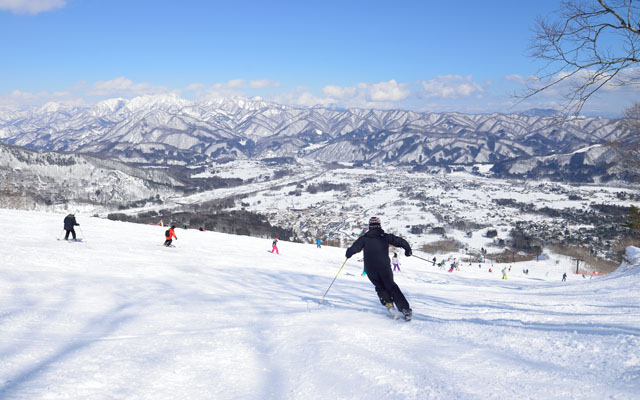Japan’s ski and snowboard resorts are enjoying a much-needed boost this snow season with the arrival of overseas visitors for the first time since April 2020.
Industry staff report an unprecedented return in international tourists, with more bookings planned in the coming weeks. Although Japan’s main ski season is from December to March, it is possible to continue skiing until early May in some places including Gassan in Yamagata, Niseko Hirafu in Hokkaido and Hakuba in Nagano.

Hokkaido resort Kuchan has seen its accommodation and lift pass reservations rise nine fold over December 2022 to May 2023, largely by travellers from Australasia, Europe and Asia.
Given the importance of the inbound market – international skiers and snowboarders totalled 960,000 in 2018, up from around 300,000 in 2013, according to the Japan Tourism Agency – resorts have developed new offerings to maximise visitors’ time on resorts.
At Niigata Prefecture’s Naeba Ski Resort, operated by Seibu Prince Hotels Worldwide, non-skiers can enter Family Snowland, an expansive park offering snow rafting, snow tubing, snow trains, snowmobiles and other outdoor activities.
Hakuba Happo-one Snow Resort opened a snow park with ramps and bumps following more enquiries about space for snowboarding tricks. According to operators, The Parks and Hachi Crew, the new facility is a “surf-ride x freestyle park that makes the most of Happo’s wild terrain and excellent snow quality”.
In anticipation of greater demand for information, Skiday began releasing photos of ski resorts taken every 15 minutes, a service designed to allow users to check the local temperature and up-to-date snow conditions at resorts. About 70 ski resorts have used the service this season.
Resorts are hoping the strong rebound is only the beginning of a long-term increase in overseas arrivals, particularly amid a domestic decline in snow sports demand. There were an estimated 2.8 million Japan-based skiers and snowboarders in 2021, down from the peak of 18 million in 1998, according to the Japan Productivity Center.


